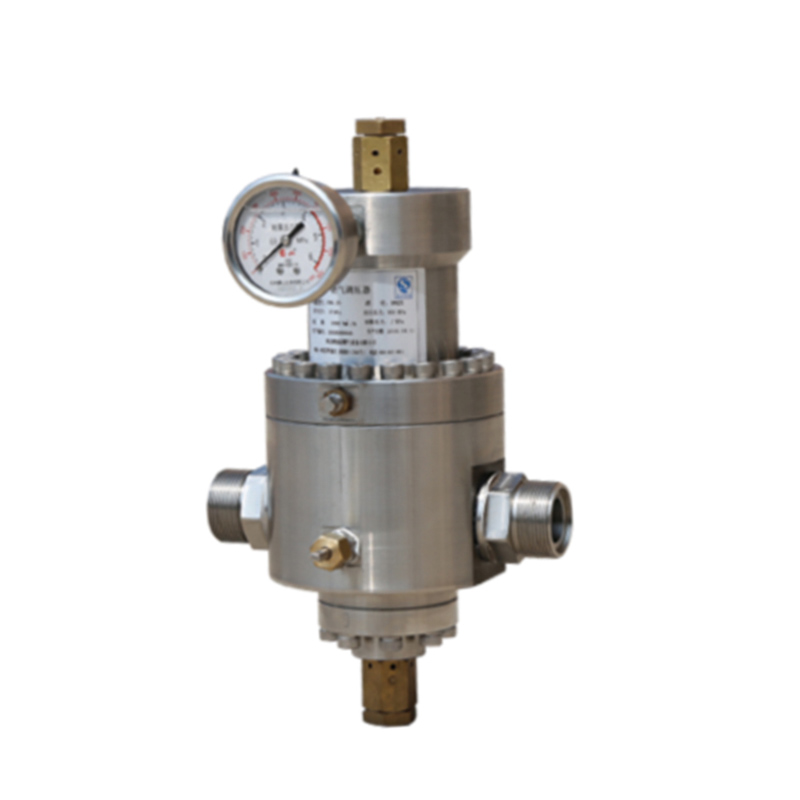
Nov . 28, 2024 10:55
Back to list
Pressure Control Solutions for Efficient System Performance and Safety Management
Understanding Pressure Regulating Devices
Pressure regulating devices are essential components in a variety of systems, serving the critical function of controlling and maintaining the pressure of fluids and gases. These devices ensure that pressure remains within safe and efficient operational limits, thereby protecting equipment and improving overall system performance.
What is a Pressure Regulating Device?
A pressure regulating device, commonly referred to as a pressure regulator, is designed to reduce the pressure of a fluid or gas from a higher level to a desired lower level. Traditionally found in systems such as gas pipelines, water supply systems, and HVAC (heating, ventilation, and air conditioning) applications, these devices play a crucial role in ensuring safety and effectiveness in fluid management.
How Do They Work?
The basic operation of a pressure regulating device involves a few key components an inlet port, an outlet port, a diaphragm, and a spring. The device receives fluid or gas at a specified upstream pressure. Inside the regulator, the diaphragm responds to the pressure acting upon it, moving accordingly to either open or close the passageway to the outlet.
When the downstream pressure drops below the set point, the spring pushes the diaphragm down, opening the inlet and allowing more fluid or gas to flow until the desired downstream pressure is achieved. Conversely, if the pressure exceeds the set limit, the diaphragm closes the passage to reduce the flow. This automatic adjustment helps maintain consistent pressure, despite fluctuations in the supply or downstream demands.
Applications of Pressure Regulating Devices
Pressure regulating devices are widely used across various industries. In residential water systems, for example, they ensure that household water pressure remains within safe limits to protect plumbing fixtures and appliances from damage. In industrial settings, regulators manage the pressure of gases used for manufacturing processes, protecting equipment and ensuring operational efficiency.
pressure regulating device

In the medical field, pressure regulators are critical in managing the delivery of gases such as oxygen to patients, ensuring that they receive the correct dosage without the risk of overpressurization. Similarly, in gas distribution networks, pressure regulators maintain a steady flow of natural gas, preventing hazards associated with pressure surges or drops.
Types of Pressure Regulators
There are several types of pressure regulating devices, each suited to specific applications. Spring-loaded pressure regulators are the most common, utilizing a mechanical spring to maintain consistent pressure. Pilot-operated regulators are another type, which use a small pilot valve to control the larger main valve, offering greater precision and responsiveness.
Electronic pressure regulators have recently gained popularity, especially in high-tech applications. These systems use sensors and control systems to adjust pressure dynamically, providing real-time monitoring and adjustments based on system requirements.
The Importance of Maintenance
Like all mechanical devices, pressure regulators require regular maintenance to function effectively. Routine inspections help identify wear and tear, ensuring that adjustments can be made before any failures occur. Proper maintenance extends the life of the regulator and enhances the overall safety of the system it supports.
Conclusion
Pressure regulating devices are integral to various systems that require precise control of fluid and gas pressures. Their ability to automatically adjust to changing conditions makes them essential for maintaining safety, efficiency, and performance across multiple industries. Whether in everyday use at home or critical applications in healthcare or manufacturing, understanding and maintaining these devices is crucial for their optimal functioning. As technology advances, the development of smarter and more efficient pressure regulators will continue to enhance their reliability and effectiveness in our daily lives.
Latest news
-
Safety Valve Spring-Loaded Design Overpressure ProtectionNewsJul.25,2025
-
Precision Voltage Regulator AC5 Accuracy Grade PerformanceNewsJul.25,2025
-
Natural Gas Pressure Regulating Skid Industrial Pipeline ApplicationsNewsJul.25,2025
-
Natural Gas Filter Stainless Steel Mesh Element DesignNewsJul.25,2025
-
Gas Pressure Regulator Valve Direct-Acting Spring-Loaded DesignNewsJul.25,2025
-
Decompression Equipment Multi-Stage Heat Exchange System DesignNewsJul.25,2025

